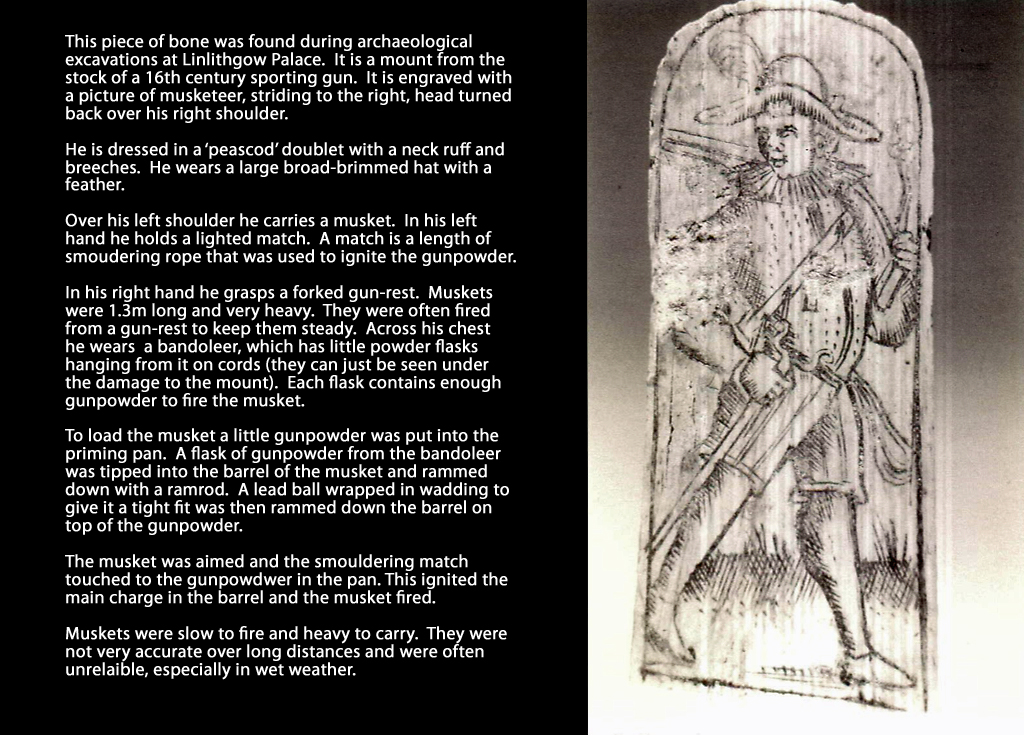 A musketeer carved on a bone mount found at the palace. It comes from a 16th century sporting gun. |
Gun Ports on South EntranceLocation: Exterior
Description:
Linlithgow was not built as a defendable castle, but as a princely dwelling-house. It was first referred to as a palace in 1429.
When James V moved the main entrance to the south side of the palace he added a twin-towered projecting gateway with oval gun-holes. There are records of artillery being kept at the palace and it is likely that behind the gun-holes were cannon ready for action. However, the needs of comfortable royal living always took priority over those of defence at Linlithgow. A 16th century cannon used gunpowder to launch a stone or iron ball. Cannon varied in calibre (diameter of the barrel), range, mobility, rate of fire, angle of fire, and firepower. Some were better suited for the defence of castles whilst others were used on the battlefield. Cannon were made in a great variety of lengths, but the general rule was that the longer the barrel, the longer the range. Some cannon had barrels over 3m in length, and could weigh over 9000 kg. They required huge amounts of gunpowder to fire stone balls only several hundred yards. The Spanish had sixteen sizes of cannon. Henry II of France opted for six sizes, from largest to smallest they are: cannon, great culverin, bastard culverin, "legitimate" culverin, falcon, and falconet. Cannon design improved and by the end of the 16th century they were so effective that the thick stone walls of medieval castles no longer provided much defence. Castles were not immediately made obsolete by cannon, but their use and importance on the battlefield rapidly declined. Teleport to the Outer Bulwarks to see another location where cannon were installed at the palace. |